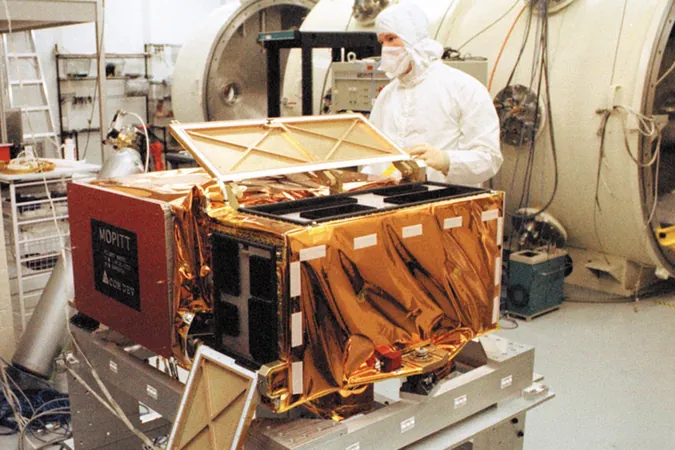
End of an Era: Canadian Space Experiment MOPITT Powers Down After 25 Years
2025-04-11
Author: Benjamin
In a bittersweet farewell, Canadian atmospheric researchers have wrapped up what is likely the longest-running space science experiment in our nation's history.
Known as MOPITT, which stands for Measurement of Pollution in the Troposphere, this innovative device was launched aboard NASA's Terra satellite back in December 1999. Originally designed to function for only five years, MOPITT has worked tirelessly for over 25 years before being switched off recently to conserve power on the aging satellite.
Jim Drummond, a professor emeritus and Canada's principal investigator for MOPITT, clarified that the decision to shut down the experiment was made this year and is not tied to any funding cuts from the Trump administration.
"In the end, it was simply a decision to power down one of the instruments, and unfortunately, we drew the short straw," Dr. Drummond explained during a gathering at the Canadian Space Agency in Longueuil, Quebec.
Built by ComDev, now Honeywell Aerospace, MOPITT was created to monitor carbon monoxide levels, a critical indicator of pollution caused by incomplete combustion and a major air quality concern globally.
While it was intended for a modest five-year lifespan, MOPITT shattered expectations by providing an unprecedented continuous record of carbon monoxide levels across the globe. Its data played a pivotal role in demonstrating the international impact of pollution resulting from fossil fuel combustion, industrial activities, and even wildfires.
Prior to MOPITT, the only carbon monoxide measurements available came sporadically from NASA's space shuttle missions, which were not dependable for continuous observation. This made MOPITT's lengthy, unbroken data set invaluable for scientists, allowing them to analyze environmental trends with unprecedented accuracy.
Helen Worden, MOPITT's U.S. principal investigator, emphasized that having such a prolonged and consistent record makes it much easier to identify pollution trends over time.
One of MOPITT’s standout capabilities was its dual-method measurement of carbon monoxide, enabling scientists to gain insights into atmospheric changes at different altitudes while also pinpointing ground-level sources.
Key findings from MOPITT include a notable decline in overall carbon monoxide emissions in countries like China, which have transitioned from coal to cleaner energy and electric vehicles. However, it has also detected a rise in emissions linked to extensive wildfires, such as Canada’s devastating fire season in 2023.
Carbon monoxide is not only a pollutant but also serves as a critical tracer for other harmful particulates, helping scientists assess overall air quality and the impact of deforestation in sensitive areas like the Amazon.
Although carbon monoxide alone is not a major contributor to climate change, its interaction with hydroxyl radicals (OH) is crucial for understanding methane levels, another potent greenhouse gas. This linkage underscores the importance of accurate carbon monoxide measurements in climate modeling.
As MOPITT’s contributions come to a close, Dr. Worden noted that its success illustrates the power of international scientific collaboration. "If we weren’t communicating, we wouldn't have made nearly as much progress as we did," she remarked, highlighting the shared benefits experienced by researchers across North America and beyond.









 Brasil (PT)
Brasil (PT)
 Canada (EN)
Canada (EN)
 Chile (ES)
Chile (ES)
 Česko (CS)
Česko (CS)
 대한민국 (KO)
대한민국 (KO)
 España (ES)
España (ES)
 France (FR)
France (FR)
 Hong Kong (EN)
Hong Kong (EN)
 Italia (IT)
Italia (IT)
 日本 (JA)
日本 (JA)
 Magyarország (HU)
Magyarország (HU)
 Norge (NO)
Norge (NO)
 Polska (PL)
Polska (PL)
 Schweiz (DE)
Schweiz (DE)
 Singapore (EN)
Singapore (EN)
 Sverige (SV)
Sverige (SV)
 Suomi (FI)
Suomi (FI)
 Türkiye (TR)
Türkiye (TR)
 الإمارات العربية المتحدة (AR)
الإمارات العربية المتحدة (AR)